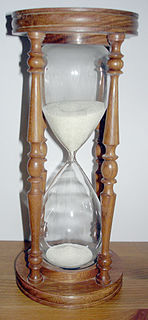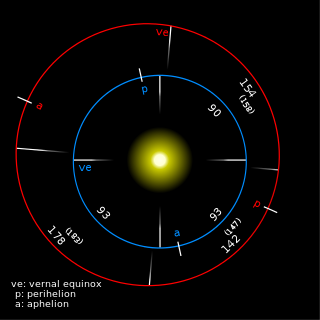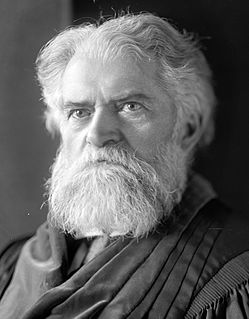 W
WAquatic timing systems are designed to automate the process of timing, judging, and scoring in competitive swimming and other aquatic sports, including diving, water polo, and synchronised swimming. These systems are also used in the training of athletes, and many add-on products have been developed to assist with the training process.
 W
WA Burt strut, also known as a timing strut or beam splitter, is a black, rectangular plate attached to the front of a competition vehicle, usually a racing car, to provide a standardised, repeatable method by which to break a timing light beam at the start and finish of events timed to high-degrees of accuracy. These events are commonly those in which competitors race against the clock, rather than physically against another vehicle, such as sprint or hillclimb races. The strut was invented in 1967 by Ron Smith; manager, chief mechanic and future husband to 1970 British sprint champion Patsy Burt. As the strut made its first appearance on the front of Burt's McLaren-Oldsmobile her name was used as its official title. In recent years the generic term timing strut has also become common.
 W
WChronometry is the science of the measurement of time, or timekeeping. And with the measurement, Chronometry employs the standardisation of time as well, serving as a significant reference for many and various fields of science.
 W
WThe Deal Timeball is a Victorian maritime Greenwich Mean Time signal located on the roof of a waterfront four-storey tower in the coastal town of Deal, in Kent, England. It was established in 1855 by the Astronomer Royal George Biddell Airy in collaboration with Charles V. Walker, superintendent of telegraphs for the South Eastern Railway Company. It was built by the Lambeth firm of engineers Maudslay and Field. The time ball, which, like the Greenwich time ball, fell at 1 pm precisely, and was triggered by an electric signal directly from the Royal Observatory.
 W
WThe equation of time describes the discrepancy between two kinds of solar time. The word equation is used in the medieval sense of "reconcile a difference". The two times that differ are the apparent solar time, which directly tracks the diurnal motion of the Sun, and mean solar time, which tracks a theoretical mean Sun with uniform motion. Apparent solar time can be obtained by measurement of the current position of the Sun, as indicated by a sundial. Mean solar time, for the same place, would be the time indicated by a steady clock set so that over the year its differences from apparent solar time would have a mean of zero.
 W
WFully automatic time is a form of race timing in which the clock is automatically activated by the starting device, and the finish time is either automatically recorded, or timed by analysis of a photo finish. The system is commonly used in track and field as well as athletic performance testing, horse racing, dog racing, bicycle racing, rowing and auto racing. In these fields a photo finish is used. It is also used in competitive swimming, for which the swimmers themselves record a finish time by touching a touchpad at the end of a race. In order to verify the equipment, or in case of failure, a backup system is usually used in addition to FAT.
 W
WThe Global Positioning System (GPS) Week Number Rollover is a phenomenon that happens every 1024 weeks, which is about 19.6 years. The Global Positioning system broadcasts a date, including a weekly counter that is stored in only ten binary digits. The range is therefore 0–1023. After 1023 the internal value "rolls over", changing to zero again. Software that is not coded to anticipate the rollover to zero may stop working or could be moved back in time by 20 or 40 years. GPS is not only used for positioning, but also for accurate time. Time is used to accurately synchronize payment operations, broadcasters, and mobile operators.
 W
WFor thousands of years, devices have been used to measure and keep track of time. The current sexagesimal system of time measurement dates to approximately 2000 BC from the Sumerians.
 W
WThe ancient Egyptians were one of the first cultures to widely divide days into generally agreed-upon equal parts, using early timekeeping devices such as sundials, shadow clocks, and merkhets . Obelisks are used by reading the shadow that it makes. The citizens could divide the day into two parts, and then into smaller hours.
 W
WA leap second is a one-second adjustment that is occasionally applied to Coordinated Universal Time (UTC), to accommodate the difference between precise time and imprecise observed solar time. The UTC time standard, widely used for international timekeeping and as the reference for civil time in most countries, uses precise atomic time and consequently would run ahead of observed solar time unless it is reset to UT1 as needed. The leap second facility exists to provide this adjustment.
 W
WVarious schemes have been used or proposed for timekeeping on the planet Mars independently of Earth time and calendars.
 W
WMoondials are time pieces similar to a sundial. The most basic moondial, which is identical to a sundial, is only accurate on the night of the full moon. Every night after it becomes an additional 48 minutes slow, while every night preceding the full moon it is 49 minutes fast, assuming there is even enough light to take a reading by. Thus, one week to either side of the full moon the moondial will read 5 hours and 36 minutes before or after the proper time.
 W
WIn the history of Islam, a muwaqqit was an astronomer tasked with the timekeeping and the regulation of prayer times in an Islamic institution like a mosque or a madrasa. Unlike the muezzin who was usually selected for his piety and voice, a muwaqqit was selected for his knowledge and skill in astronomy.
 W
WSimon Newcomb was a Canadian–American astronomer, applied mathematician and autodidactic polymath, who was Professor of Mathematics in the United States Navy and at Johns Hopkins University.
 W
WIn relativity, proper time along a timelike world line is defined as the time as measured by a clock following that line. It is thus independent of coordinates, and is a Lorentz scalar. The proper time interval between two events on a world line is the change in proper time. This interval is the quantity of interest, since proper time itself is fixed only up to an arbitrary additive constant, namely the setting of the clock at some event along the world line. The proper time interval between two events depends not only on the events but also the world line connecting them, and hence on the motion of the clock between the events. It is expressed as an integral over the world line. An accelerated clock will measure a smaller elapsed time between two events than that measured by a non-accelerated (inertial) clock between the same two events. The twin paradox is an example of this effect.
 W
WIn Roman timekeeping, a day was divided into periods according to the available technology. Initially the day was divided into two parts: the ante meridiem and the post meridiem, before noon and afternoon, respectively. With the advent of the sundial circa 263 BC, the period from sunrise to sunset was divided into 12 hours.
 W
WTarga timing is a system of timing used in car rallying. It was invented by John Brown, the Clerk of the Course for the Targa Rusticana, a road rally organised in Wales in the 1960s by Oxford University Motor Drivers Club. Targa timing became the standard timing method used on rallies for almost 20 years following its invention in 1963. However, it was eventually banned as it became widely abused—the standard method by which organisers could set very high average speeds in a manner that left no permanent record.
 W
WA tide dial, also known as a Mass or scratch dial, is a sundial marked with the canonical hours rather than or in addition to the standard hours of daylight. Such sundials were particularly common between the 7th and 14th centuries in Europe, at which point they began to be replaced by mechanical clocks. There are more than 3,000 surviving tide dials in England and at least 1,500 in France.
 W
WTime Ball Buildings, Leeds is a Grade II* listed building in Briggate, Leeds.
 W
WIn sociology and anthropology, time discipline is the general name given to social and economic rules, conventions, customs, and expectations governing the measurement of time, the social currency and awareness of time measurements, and people's expectations concerning the observance of these customs by others.
 W
WTime in physics is defined by its measurement: time is what a clock reads. In classical, non-relativistic physics, it is a scalar quantity and, like length, mass, and charge, is usually described as a fundamental quantity. Time can be combined mathematically with other physical quantities to derive other concepts such as motion, kinetic energy and time-dependent fields. Timekeeping is a complex of technological and scientific issues, and part of the foundation of recordkeeping.
 W
WWinter time is the practice of shifting the clock back during winter months, usually −1 hour. It is a form of daylight saving time which is the opposite compensation to the summer time. However, while summer time is widely applied, use of winter time has been and is very rare.